Inside the Research | March 2019 Hearing Review
It’s probably safe to say that there is no greater and more effective professional advocate for the use of telecoils and loop systems than Juliëtte Sterkens, AuD. Dr Sterkens, a native of the Netherlands, holds a degree in Speech Pathology from Revalidatie Academie in Heerlen and an AuD from the Arizona School of Health Sciences (ASHS) in Mesa, Ariz. Having recently retired from private practice, she is currently on her “encore career” as the Hearing Loss Association of America (HLAA) National Hearing Loop Advocate. For her past advocacy efforts she has received many awards, including the Wisconsin Audiologist of the Year, the American Academy of Audiology (AAA) President’s Award, and the Humanitarian of the Year Award from her alma mater. You can find Dr Sterkens almost anywhere dispensing professionals gather. I caught up with her just after the holidays this year.
Beck: Hi Juliëtte! Thanks for your time today.
Sterkens: Hi Doug. Happy New Year to you.
Beck: Thanks Juliëtte. And for the folks who may not know much about you, tell me a little about yourself and, do I detect an accent?
Sterkens: Nothing wrong with your hearing, Doug! My native language is Dutch. After my marriage in 1981, I moved to Wisconsin. That is also when I switched from speech pathology to audiology. Following graduation, I worked in a private practice—the same practice I purchased with a friend and co-worker, 5 years later. This was quite unexpected. I was 6 months pregnant and had no plans to become a business owner, but it now ties for first place among my professional accomplishments—with the other being a hearing loop advocate.
Beck: So…how did you make the leap from practice owner to full-time volunteer for the Hearing Loss Association of America (HLAA)?
Sterkens: How much time have you got, Doug! That’s a long story. I am guessing you want the Readers’ Digest version?
Beck: Yes, please.
Sterkens: I discovered loops were making a strong comeback thanks to David Myers’ efforts in Michigan and advocates in other states. He and I connected, and when I told him I wanted to Loop Oshkosh, he encouraged me start with fostering one or two loops in the community. Thanks to my engineer husband we soon had a few going in houses of worship. It was there I personally witnessed the dramatic joy my clients experienced hearing for the first time in a loop.
Then something else happened. Some of my clients took matters into their own hands. They helped fund loops and started speaking up in places they couldn’t hear, and they wrote and published letters praising how well loops helped.
That’s when I started speaking up. We all know that, in large public places, hearing aids alone are sometimes unable to deliver. This professional and consumer outreach—and managing www.LoopWisconsin.com—started to consume more and more of my personal time. I was almost busier with my loop advocacy efforts than I was in my practice. When Dave Myers offered to fund my outreach via his family foundation, and HLAA gave me the lofty “National Hearing Loop Advocate” title, I decided to retire from my practice and become a full-time advocate. I am not making this a short story, am I?
Beck: No, but it’s a great story and I know you’ve been busy advocating, as I keep running into you at conferences where you’re presenting. Are your advocacy efforts paying off?
Sterkens: You spend a lot of time on the road yourself, Doug, and probably for the same reason I do: to help foster change in how we provide hearing care. And yes, hearing loop initiatives are popping up all over the USA.
Beck: That really is good news. So, for people just starting to think about loops, please explain what are the basic components of a hearing loop system, and how they work?
Sterkens: A hearing loop wirelessly transmits magnetic energy from a PA system or other sound system to telecoil sensors in hearing aids. It requires installing a wire loop or array of loops in a facility’s floor or ceiling. The copper wire makes loops more challenging to install in existing venues, but what’s cool about them is our clients only need to activate their T-coil in order to hear the sound from a stage, TV, or at the airport, and telecoils in remote mics and streamers allow users of the smallest Mini RICs to hear in a loop.
Beck: How do hearing loops and T-coils compare to FM or infrared systems?
Sterkens: For years I tried to get my clients to use existing FM systems, but FM and infrared are a hassle and they’re stigmatizing. And generic earphones/headphones never sound as good as hearing aids programmed for the user’s own hearing loss. Hearing loops change all that because they’re seamless. They give users the option to use them when they need them, via programmed and fine-tuned telecoils.
Beck: I agree. But what about Wi-Fi, and Bluetooth, and other streaming solutions?
Sterkens: Those are wonderful in the right time and place, but they’re BYOD.
Beck: BYOD?
Sterkens: Bring Your Own Device [microphone], and they don’t meet the ADA law. They still require a way to couple to older-style hearing aids or smartphones. And arguably, for older folks, they’re not as user- friendly as they may be for people accustomed to smartphones. I love my 92-year old mom, and she does OK with her iPad and iPhone, but…you do not want her messing with her smartphone in a quiet church. It’s not that hearing loop advocates are against new technology, but new technology needs to be as good, as easy to use, and as universal as hearing loops.
Beck: What are the most significant contemporary changes in T-coils?
Sterkens: Good question! T-coils have changed and improved over time. Their frequency response is now much broader than they used to be when they were only used with Bell telephones. I have also seen evidence that manufacturers are paying closer attention to ensure telecoils are vertically oriented and their response is transparent to the mic response. Other developments include the invention of LoopBuds and T-coils installed in smartphone earphones so people without hearing aids (think Lyric users) can use an installed and accessible loop system. I’m sure you’ve seen the apps that allow tech-savvy users to vary the mic and telecoil mix on the fly? Apps like these should reduce the number of office visits needed to fine-tune T-coil programs.
Beck: And finally, what’s the maximum signal-to-noise ratio (SNR) one might expect from a T-coil and Loop System?
Sterkens: The improvements in SNR are dramatic and easily on the order of 20-25 dB, as with those documented in personal FM system studies.1 Occluding earmolds may increase the SNR if the instrument is set to T-only, while open-canal instruments reduce those numbers. In hearing loops installed to the IEC standard, the hearing can be exquisite. I have personally used hearing aids in hundreds of loops; perhaps it’s due to my Dutch brain, but I just love how I can just sit back and hear with ease, while using a loop. Hearing loops decrease cognitive load. A survey I completed among some 327 loop users at an HLAA convention showed that listening effort changed dramatically—on a scale from 1 to 10, it fell from an average of 6.9 out of the loop to 1.9 in the loop.
Beck: But with hearing loops only available in some areas of the country why should providers spend the time educating about loops and activating telecoils?
Sterkens: The recently amended ADA law makes it easier to explain why clients ought to get a telecoil in their hearing aids. By the way, I am not the only one saying this. Consumer Reports names the telecoil as the number one feature to consider.2 The ADA law requires all assistive listening systems to be directly hearing-aid compatible, and currently the telecoil is the only component that makes this possible—so potentially our clients can use their telecoil everywhere FM and IR systems with neckloops are in use. And speaking of laws, in several states consumers have managed to pass, or are in the process of introducing, legislation to make informing potential users of the ADA law and telecoils prior to the ordering of hearing aids, mandatory. My experience is that use of hearing aids increases wherever providers activate telecoils; educate clients via demos in looped waiting rooms, for example; refer clients to looped venues, and speak up in the community or encourage clients to speak up when unable to hear, use of hearing loops rises.3,4 It’s even possible to verify the frequency response, gain, and advanced features of hearing aid telecoil-based phone programs.5
Beck: To be honest, I use Bluetooth to connect both my hearing aids to my smartphone for telephone conversations, streaming music, and more, and that’s been nothing short of amazing.
Sterkens: Bluetooth cannot be beat when it involves speech via a remote mic or hearing on a smartphone, but, as you know, it provides a “one-on-one” paired connection only. To me, Bluetooth is a complementary technology to T-coil; it’s not one versus the other. And honestly, I always recommend people get both technologies whenever possible.
Beck: Thanks Juliëtte. I think you’re right. It’s about access, so whenever possible, T-coils (for public assistive listening) and Bluetooth (for private connections to smartphones) do combine to give maximal access.
Sterkens: Exactly, and so it’s all about knowing what the options are so we can help our clients make a better choice, and perhaps the single most important issue may very well be demonstrating the benefit of a T-coil, as well as the wireless mics or TV transmitters. Once the wearer hears the sound quality and sees how easy they can both be operated, they’re not going to want to get one without the other.
Beck: I agree. Thanks Juliëtte. It’s been a pleasure chatting with you, and I wish for you a glorious and loopy 2019!
Sterkens: Thanks Doug. Gelukkig Nieuwjaar to you too!
Correspondence can be addressed to Dr Beck at: [email protected]
Citation for this article: Beck DL. Telecoils and hearing loops: An interview with Juliëtte Sterkens, AuD. Hearing Review. 2019;26(3)[Mar]:38-39.
References
-
Crandell CC, Smaldino JJ, Flexer C. Sound field FM amplification: Theory and practical applications. San Diego, CA: Singular Publishing;1995.
-
Consumer Reports. Best hearing aid buying guide: Sound advice. https://www.consumerreports.org/cro/hearing-aids/buying-guide/index.htm. Published January 2019.
-
Kochkin S, Sterkens J, Compton-Conley C, et al. Consumer perceptions of the impact of inductively looped venues on the utility of their hearing devices. Hearing Review. 2014;21(10)[Oct]:16-26.
-
Lopez SM, Caccavo MT. How to win patients and influence community communication: A step by step guide for looping your community. Audiology Practices. 2014;6(4):26-27.
-
Folkeard P, Pumford J, Narten P, Scollie S. Verifying bilaterally linked and monaural telephone programs in hearing aids. Hearing Review. 2017;24(3)[Mar]:30-38.



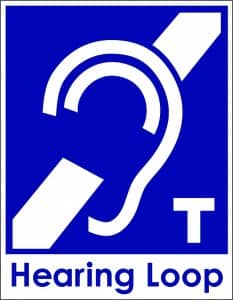
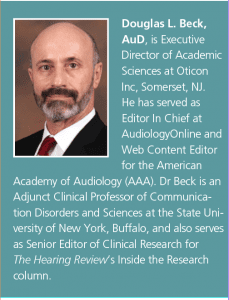
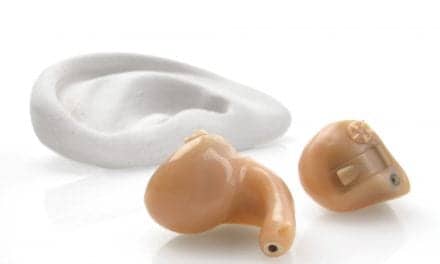
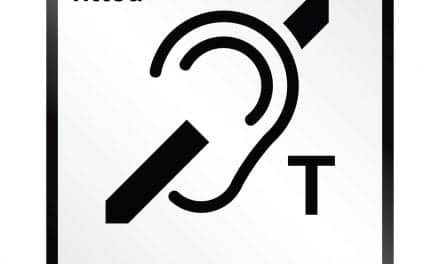
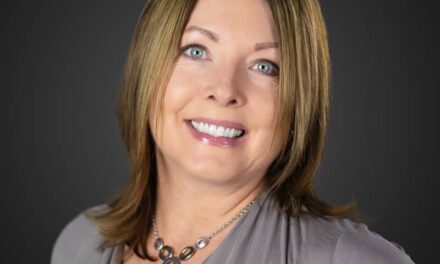

I bought HAs based on availability of Tcoil over bluetooth. My mistake. Tcoil does nothing for me on phones (advertised as Tcoil equipped). External bluetooth (Phonak Compilot Air 2) is wonderful. I find no venues nearby that are loop-equipped. My thought: Telecoil has a lot of partisans, principally Ms Juliette Sterkins, but in Arlington, Texas, in 2020, with Phonak Brio 3 hearing aids with Telecoil, it’s a waste. If your hearing aid purchase requires choosing Tcoil RATHER THAN bluetooth, I did, I’m sorry, and I won’t do it again.
My dad is getting older and I think he needs a hearing aid of some sort, so I wanted more info on hearing loops! I didn’t know hearing loops require a wire loop or loops in the floor or ceiling and allow clients to hear a sound better. That’s something my dad could really use in his house since he doesn’t leave much anymore, so I’ll look more in hearing loops and where we could get some help installing, thanks to this post!
I would like to be kept in the loop, so to speak.
I m on the loop committee here in Eugene.
Thank you Doug and Juliette. Met you, Juliette,when you gave a presentation at The Shedd in Eugene end of last year. My husband and I and family emigrated from South Africa 1989. If I understood more of this technology would love to promote this, especially seeing that as a musician and speaker I am updating my skills with a few other players. I will have to update my hearing aids with T-coils. In the meantime carry around an auxillary streamer but still need captions to help. On looking back over the past 20 years, I think that the struggle in hearing depletes one of energy because of the strain to hear clearly. Have a CapTel phone. It is a laugh… amazing spelling and interpretation of words at times:) Will keep update on telecoils but find the expenses pretty exorbitant See change on the horizon and wonder how it will effect the audiology research especially for us oldies.
Thank you for your excellent interview/article. As a HA and CI user and hearing loop designer/installer, your article is an important part of not only educating people with HL, but also the facility owners, about ADA and the misunderstood the need for communication accessibility in all public venues.